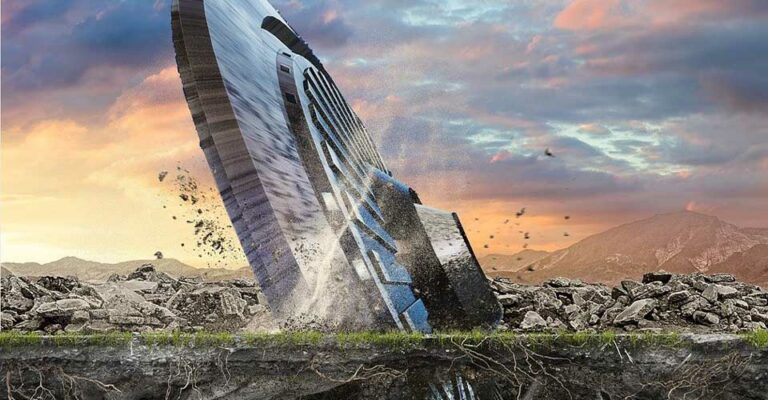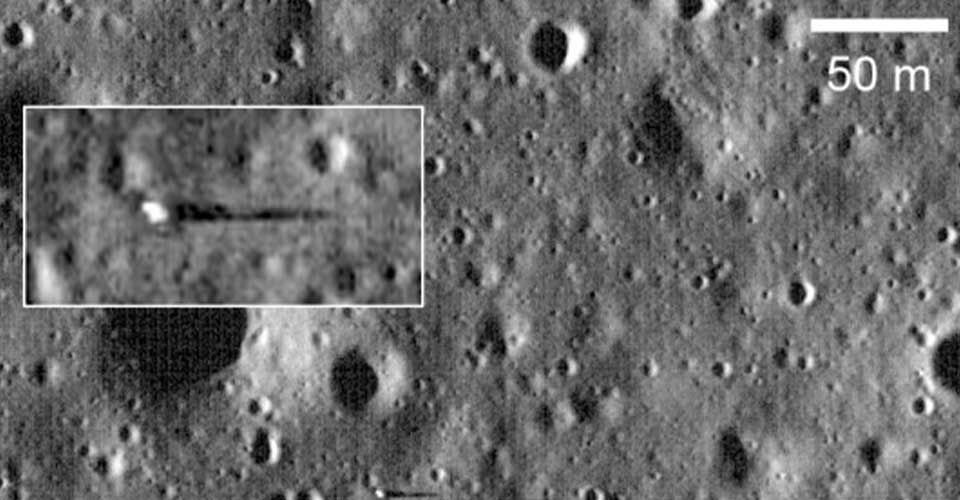
A 2018 report published by the US National Aeronautics and Space Administration (NASA) shows the lengths America’s premier space agency is willing to consider when proving the existence of intelligent alien life.
Entitled NASA and The Search For Technosignatures, the 70-page document details all of the various ways space scientists considered intelligent extraterrestrial life might be located during NASA’s Technosignatures Workshop, hosted in Houston, Texas, September 26-28, 2018.
Numerous novel methods for detecting traces of advanced alien technology are discussed in the report. Yet one section is particularly intriguing.
Described as “interlopers,” NASA scientists discussed the potential for extraterrestrial probes to not only travel through our planetary neighborhood but also to have accidentally or intentionally landed on one or more planets or numerous natural satellites in our solar system. Even more striking, NASA says explicitly, “it is even possible that the Earth itself hosts such artifacts.”
While the topic of crashed alien technology is marred by unscientific lore, a growing number of scientists are saying the proof of alien life could be closer to home than we realize.
“Yes, I think the idea of searching our solar neighborhood for evidence of extraterrestrial technology is worth doing,” astrobiologist and research scientist at Blue Marble Space Institute of Science, Dr. Jacob Haqq-Misra, told The Debrief. “We do not know how prevalent life or technology is in our galaxy, and so we cannot easily assign any probabilities to say that technology is more or less likely on an exoplanet versus in our solar system.”

THE HUNT FOR LOST ALIEN ARTIFACTS
For over five decades, the search for extraterrestrial intelligence has almost exclusively focused on monitoring the sky for signals that could represent a distant advanced alien civilization. However, for as many years, scientists have quietly discussed the possibility that evidence for advanced alien life could be closer than we realize in the form of relics or artifacts.
Largely thanks to technological advances, in recent years, a handful of scientists have slowly started coming forward and saying that the hunt for nearby alien relics is something that merits serious consideration.
In 2011, physicist Dr. Paul Davies and researcher Robert Wagner of Arizona State University authored a paper proposing that photographic mapping captured by the Lunar Reconnaissance Orbiter could be used to search for possible alien artifacts on the surface of the Moon.
Speaking with The Debrief, Dr. Davies explained the conditions on the Moon are ideal for preserving trace evidence of artificial influence or alien artifacts.
“The Moon is almost inert, and so objects and features on the surface are preserved for an immense duration. Eventually, the material thrown up by meteor impacts erases records, but a large object on the Moon might remain detectable for tens of millions of years,” said Dr. Davies, who also authored the book: The Eerie Silence: Are We Alone in the Universe?
Dr. Haqq-Misra also points out that NASA’s Mars Reconnaissance Orbiter has captured equally voluminous numbers of high-resolution images of Mars. “There are thousands of such images, and so it is possible that an anomalous artifact could be captured in such images without anybody noticing yet,” explained Dr. Haqq-Misra.
Outside of the Moon and Mars, scientists know even less about the surfaces of other bodies in our solar system.
In a 2012 paper entitled: On the Likelihood of Non-Terrestrial Artifacts in the Solar System, Dr. Haqq-Misra and NASA physicist Dr. Ravi Kumar Kopparapu said the lack of complete analysis ultimately makes it impossible to say just how likely it is or isn’t that alien technology could be lying about in our celestial neighborhood. “We cannot place very strong limits on the absence of extraterrestrial technology in the solar system until we perform more complete analyses to rule out such possibilities,” said Dr. Haqq-Misra.
Dr. Haqq-Misra points to advances in artificial intelligence and machine learning as ways that might help the search for anomalies in existing surface imagery.
One such technique, discussed in a paper published in early 2020, showed that researchers could successfully apply unsupervised distributed machine learning to detect surface anomalies in remote sensing and space science. “This approach could conceivably detect artifacts on the surface of the Moon that would not have been easily noticed by naked eye analysis,” explains Dr. Haqq-Misra.
“One way to check such algorithms is to ensure that they can find the original Apollo landing site, which I believe this algorithm succeeds at. However, any artifacts that are camouflaged or covered in dust would not be possible to detect through such machine learning analysis,” Dr. Haqq-Misra cautions.

HAS EVIDENCE FOR ALIEN RELICS ALREADY BEEN FOUND?
Intriguingly, some allege to have already found compelling evidence for artificial extraterrestrial artifacts in the analysis of existing imagery.
In one relatively recent study, researchers with The Lunascan Project and Society for Planetary SETI Research said analysis of images captured by Apollo 15 and the Lunar Reconnaissance Orbiter of two unusual features in the crater Paracelsus C on the far side of the Moon, appeared to show strange, possibly artificial artifacts.
Researchers said 3D renderings suggest the features in Paracelsus C and surrounding terrain could be “an entrance and passageway that may lead underground.” Authors note one of the two structures is not only statistically different from the surrounding landscape but also “unlike any feature seen on the moon to date.”
“A decidedly conservative mainstream scientific establishment often rejects anomalies based on subject matter alone, i.e., there cannot be alien artifacts on the Moon because there are no alien artifacts on the Moon (or other planets). Such a view is an example of circular reasoning, based on the belief that extraterrestrials do not exist, or if they do exist, that they could not have traveled to our solar system,” researchers noted in the paper.
The greater scientific community has largely dismissed or ignored the study published in the Journal of Space Exploration in 2016. “Our analysis has been ignored by the planetary science community, which is surprising, given we present evidence supporting their own hypothesis,” lead author of the study, Dr. Mark J. Carlotto, an electrical engineer and senior scientist at General Dynamics, told The Debrief in an email.
“I refer to remarks by P.C.W. Davies concerning the search ‘for telltale signs of alien technological activity’ on the Moon,” said Dr. Carlotto. “Where on Earth the evidence may be buried beneath overlying strata, Davies believes ‘Quarrying or construction on the moon or asteroids would persist conspicuously for much longer, and scrutiny of the Lunar Reconnaissance Orbiter data would be a useful exercise.’ This is exactly what we reported in our paper.”
Dr. Haqq-Misra told The Debrief he isn’t entirely sold on the idea that the unusual features in Paracelsus C represent a possible passageway to an underground site. Nevertheless, as one of the leading figures in the scientific search for alien technosignatures, Dr. Haqq-Misra said even a novel geologic feature on the Moon is enough to warrant further investigation.
“I think the premise for such an analysis is reasonable, as we cannot necessarily rule out the possibility of artifacts on the moon until we search. The analysis in the paper seems like a reasonable case to justify follow-up observations in the future, ideally by a rover,” said Dr. Haqq-Mirsa in an email.
It is worth noting that some could consider Dr. Carlotto to be a controversial figure. Described in his Amazon author’s bio “as an engineer, scientist, and author with almost forty years of experience in satellite imaging, remote sensing, image processing, and pattern recognition,” Carlotto has authored several books on “planetary mysteries, UFOs, local history, and most recently, ancient origins and archaeology.”
Carlotto, however, asserts he and his team employed tried and true practices and the scientific method in their analysis of anomalies in Paracelsus C. “The methods used to analyze features on the moon were first developed as part of an ‘independent Mars investigation’ in the 1980s to better understand a collection of unusual objects on Mars including the so-called ‘Face on Mars,'” said Dr. Carlotto.
“The methods included an algorithm that used fractals to detect anomalies (deviations from the background), which was originally developed for terrestrial targets (i.e., military vehicles) and later applied to Mars and the Moon, and shape-from-shading, a means of recovering 3D information from a single image of an object to better visualize its structure. The shape-from-shading analysis was included in Carl Sagan’s Cosmos series,” explained Dr. Carlotto.

TRACES OF INTELLIGENT EXTRATERRESTRIALS ON EARTH
By far, the most shocking theory proposed in the NASA Technosignatures Workshop Report is the idea that extraterrestrial artifacts could potentially not only be hidden on bodies within our Solar System but also right here on Earth.
“Because the geological, paleontological, and archaeological records on Earth are so incomplete, it is even possible that the Earth itself hosts such artifacts, although, again, this idea is often conflated with unscientific popular imaginings and science fiction stories about alien visitation, and so must be approached carefully,” the NASA report reads.
This line will almost assuredly offend the sensibilities of anyone who already finds the idea of alien relics on the Moon or Mars simply too far-fetched for serious consideration. However, some venturesome scientists are willing to say the concept isn’t completely crazy.
One of those intrepid theorists is Alexey Arkhipov, a senior scientist at the Institute of Radio Astronomy of the National Academy of Sciences of Ukraine.
In a paper titled Earth-Moon System as a Collector of Alien Artefacts, published in the Journal of The British Interplanetary Society in 1998, Arkhipov stakes the case during the Solar System’s 4.5 billion year history, Earth could be a natural collector of intelligent extraterrestrial artifacts.
“Alien space activity in the Solar System could lead to the pollution of space,” writes Arkhipov. “Moreover, alien space debris could fall on the Earth spontaneously like our satellites do. That is why the search for candidates to such events are worth discussing.”
Arkhipov goes as far as pointing out some accounts of rare “multi-colored” meteorites or fireballs reported in the early 20th Century. In one such incident, eyewitnesses described seeing a meteorite that “emitted sparks of red, blue, white, and green hues” as it streaked across the sky near Miami, Florida, on June 13, 1928.
The coloring of visible light produced by a meteor depends on the meteoroid’s chemical composition and metallic content. Arkhipov points to these historical examples to question whether the curious observations of these bolide’s coloring and de facto unique composition possibly represent extraterrestrial technology falling to Earth.
Dr. Paul Davies takes a more tempered approach in his suggestion that scientists could potentially find alien artifacts on Earth. As the NASA report ambiguous suggests, Davies considers Earth’s 4.5 billion year history a very long time, long enough that an intelligent alien species could have possibly swung by to visit at some point.
Davies, however, cautions finding long-lost alien artifacts on Earth is not exactly an easy task. “Earth is a bad place to preserve technosignatures over long durations,” explained Davies.
In his book, The Eerie Silence lays out three ways traces of long-lost alien technosignatures could survive a 100 million year period and potentially be found on Earth. One way Davies notes could be the detection of abnormal radioactive or nuclear waste on the globe.
Scientists could find another trace of alien technology in the remnants of ancient large-scale mining or quarrying operations. To this point, physicists Dr. Duncan Forgan and Dr. Martin Elvis of the University of Edinburgh and Harvard University made a similar case that remains of alien mining operations could be a potential way for discovering we are not alone in the Universe.
In their paper, which was published in the Journal of Earth and Planetary Astrophysics in 2011, Forgan and Elvis suggest that evidence of extraterrestrial asteroid mining could be detectable from Earth. “Considering the detected disc of debris around Vega as a template, we explore the observational signatures of targeted asteroid mining (TAM), such as unexplained deficits in chemical species, changes in the size distribution of debris, and other thermal signatures which may be detectable in the spectral energy distribution (SED) of a debris disc,” authors note.
Finally, Davies suggests that signatures of alien technology could potentially be observed in biotechnology. “Either creating a shadow biosphere or embedding a message in terrestrial genomes,” Davies explained to The Debrief.
Due to vast amounts of data being collected and developed in many fields, Davies suggests that searches for anomalies representing extraterrestrial technosignatures on Earth could be conducted cheaply, even if the likelihood seems highly improbable.
In the “Solar System Artifacts and Interlopers” section of their report, NASA goes full “Ancient Aliens” in discussing how any alien technosignatures discovered in our Solar System should not be considered to inherently be of interstellar origin.
Leaning on a 2017 paper authored by Penn State University professor of astronomy and astrophysics Dr. Jason Wright, the NASA report says that instead of deep space, the origin of alien technosignatures in our neighborhood could originate from an early habitable Mars or Venus.
Taking it even one step further, the report states, “…previous episodes of widespread, planet-altering technology on the Earth by putative, now-extinct species (that existed long before humans did) might be identified through paleoclimate investigations using isotopic proxies, land-use analysis, transuranic elements (or fission byproducts), or by searching for artifacts in the geologic record.”

THE HUNT FOR ALIEN TECHNOSIGNATURES IS NOT THE INVESTIGATION OF UFOS
It’s hard not to picture images of crashed flying saucers when considering the potential for extraterrestrial artifacts lying in wait to be found both in our celestial neighborhood or possibly even on Earth.
This is particularly true given that the topic of Unidentified Flying Objects (UFO), or in modern parlance, “Unidentified Aerial Phenomena” (UAP), has undergone a stunning yet thriving renaissance in the last few years.
Scientists, however, caution there’s a sharp difference between the scientific search for alien technosignatures and popular UFO lore.
Those involved in the scientific search for extraterrestrial technosignatures or alien relics say some of the myths and taboos surrounding the subject of UFOs may negatively impact our ability to discover verifiable alien technology.
“To non-scientists, the idea of a “UFO” can include a wide range of topics that include paranormal phenomenon and other claims that are either easily debunked by science or beyond the ability of science to test,” astrobiologist and research scientist at Blue Marble Space Institute of Science, Dr. Jacob Haqq-Misra, told The Debrief.
“A very small number of UFO cases remain unexplained, although this does not necessarily mean they are extraterrestrial. The association of UFOs with paranormal and non-scientific ideas makes most scientists, even those focused on technosignatures, wary of discussing any connections between a small number of UFO cases and possible technosignatures,” said Dr. Haqq-Misra.
“In the past 40 years, the search for extraterrestrial life, or SETI, has been transformed from a speculative backwater of science to something closer to the mainstream,” mentions Davies. “[However, ] we don’t take UFO reports as evidence for extraterrestrial visitation.”
“In my mind, the main argument is that Earth has been here 4.5 billion years, and there were planets around long before Earth even existed. Why would ET come now, in the tiny sliver of time that humans have been around?” posed Davies. “We need to ask whether there was alien technology in the solar system sometime in the last few billion years. If so, what possible traces might there be.”
Dr. Haqq-Misra says the cultural stigmas associated with the UFO subject could ultimately cause the scientific community to throw up blinders, inadvertently missing more concrete evidence of alien existence.
“I am not necessarily convinced that we can conclude any observed UFOs are likely extraterrestrial, as we simply do not have enough data for such explained events,” said Haqq- Misra. “However, I can certainly think of a scenario in which this could be relevant. Let us suppose that an alien spacecraft is actually passing through the solar system. This would be of interest to scientists if they were able to observe it, as there are still many technosignatures scientists are interested in searching nearby space for artifacts. But let’s say that nobody notices it, and the probe continues to reach Earth. If the probe then enters Earth’s atmosphere and is observed, then it would be classified as a UFO–which would probably mean that scientists would be wary of studying this due to association with paranormal topics. So in this scenario, a legitimate extraterrestrial probe would be ignored by scientists because of a lack of complete data and a fear of association with non-scientific ideas.”
While the Department of Defense’s sudden willingness to discuss sightings of mysterious or unexplained aerial objects is intriguing, scientists involved in the hunt for alien technosignatures want to make sure it’s abundantly clear until more definitive evidence is provided, their pursuits are not associated with the search for UFOs.
“This is not an easy problem to solve, as these cultural issues have roots spanning many decades,” said Haqq-Misra. “The interest by national governments in UFOs has helped to make talking about this subject less of a ‘taboo,’ but it would also help for scientists and science journalists to continue emphasizing to non-scientists that there is a sharp disconnect between the scientific search for technosignatures and paranormal phenomenon that are beyond the ability of science to investigate.”
Follow and connect with author Tim McMillan on Twitter: @LtTimMcMillan
No comments:
Post a Comment
Note: Only a member of this blog may post a comment.